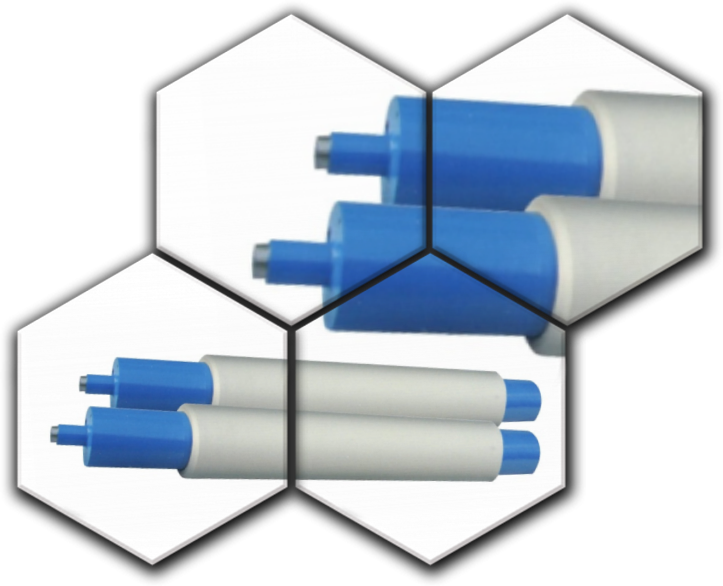PRINTING RUBBER ROLLER

High quality polyurethane rubber rollers comprise an outer rubber layer, a hard inner rubber layer over a metal core, roll neck and vent hole, these printing rollers are ideal for embossing and offset printing in high-speed printing lines.
USES
Paper-, dry film-, hot- and cold lamination
APPLICATION
- Flexographic, lithography, gravure printing, UV coating
- Offset
- Gravure
- Flexography
- Paper-, dry film-, hot- and cold lamination
- Nip rollers
- Foil processing
MANUFACTURING PROCESS
- Special UV compounds endure rigorous chemical and physical testing before layering is applied to the #45 or #20 steel alloy base cylinder according to strict rolling, machining, and handling protocols.
- Balancing tests are carried out before the shaft head is installed with hot charging techniques and welding.
- Once mandrels are attached, a dense outer rubber layer is coated and vulcanized to ensure optimally bonding quality.
- Grinding of the outermost layer is followed reservedintense polishing with CNC lathes for a seamless finish.
- Final testing is carried out to certify ideal concentricity, density, and tensile strength before packaging.
- Final testing is carried out to certify ideal concentricity, density, and tensile strength before packaging.
ADVANTAGES
- EASY INSTALLATION: Rollers come with bearings and gears already mounted to simplify installation.
- HIGH QUALITY: Made to ISO standards, rollers’ core weight, hardness, and wall thickness provide for high output with guaranteed concentricity with excellent bonding to metals.
- DURABLE: The use of special UV compounds makes rollers resistant to chemical corrosion and excessive wear, and also allows for cooler print runs without scumming.
- DIMENSIONAL STABILITY: Resetting is reduced for rollers that shrink or swell.
- INK TRANSFER: Compound resists ink permeation and reduces glazing and dot gain for optimal ink transfer.
- VERSATILE: Printing can be alternated between UV and oil-based inks immediately.
- ECONOMIC: Reduces downtime brought on reservedresetting rollers, and lasts longer than traditional rollers, in turn saving money as well.
